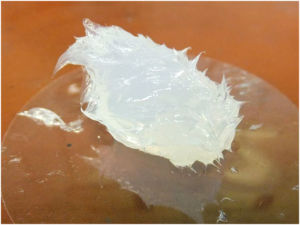Silicone and rubber are both highly versatile, flexible substances. Although people sometimes think they are the same material, there are actually important differences. However, both can be stressed or stretched and then return to their original form.

Atomic structure
Essentially, silicone belongs to the rubber family, but not all rubbers are silicone. Both substances are what is called an elastomer, which means they are comprised of repeating molecules, or polymer chains, arranged to deliver great flexibility or elasticity.
Silicone is sometimes referred to as synthetic rubber. At the atomic level, rubber is comprised of molecules with a carbon backbone. In silicone, this backbone has alternating oxygen and silicon atoms. The bonds between the silicon and the oxygen possess high energy, and these give the silicone a greater resistance when exposed to high temperatures. While silicone may exhibit a lower tear strength than an organic rubber in ordinary conditions, at high temperatures it may deliver greater resistance and strength.

More hygienic
The silicon and oxygen present in silicone give it other properties as well, including being less likely to be corroded by chemicals or succumb to fungus. Any substance that is resistant to fungus has many applications in the pharmacological or medical fields as fungal infections have become more resistant to many medical treatments, according to The Guardian. Silicone also has greater durability in the presence of UV light or ozone thanks to the strength of the silicon and oxygen bond.
Silicone hoses have a wide variety of applications in a number of industries. If you want to find out more about silicone hoses and how they could support your goals, take a look at what a reputable supplier such as https://www.goodflexrubber.com/pages/silicone-hose-manufacture has to offer and get some ideas and advice.
Thanks to its ability to withstand high temperatures, silicone also delivers superior thermal insulation when compared to rubber. Rubber can be used for thermal insulation, but silicone will do the job better. The addition of oxygen and silicon into its atomic structure is what really sets silicone apart. With the addition of these elements, silicone has just about all of the benefits of rubber, but with some useful extras. For projects where chemical corrosion is a possibility or hygiene is important, silicone is always the best choice.















